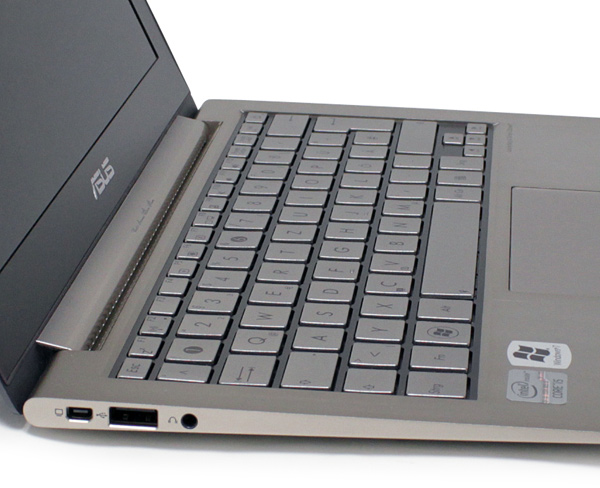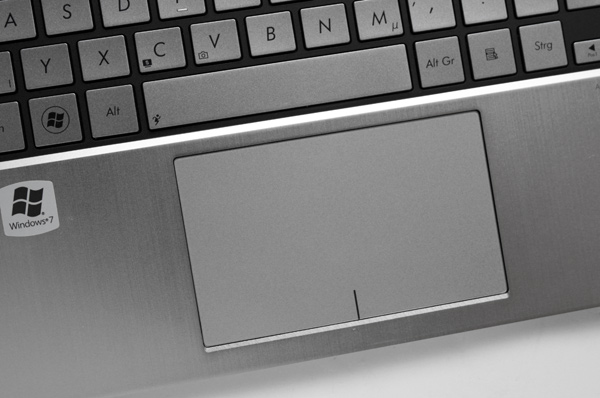Index
Just as with our earlier review of the ASUS ZenBook UX21E ultrabook in Novemeber, we had a few issues with the overall ergonomics of the ZenBook series, but nothing overtly serious enough to demand a drastic revisional change.
The keyboard ASUS engineered for this ultrabook feels very light to the touch and doesn't feel cramped in any way whatsoever. Our major concern, however, lies with the squareness and flatness of the keys. As many Apple MacBook users are familiar with, Apple's notebook keyboards have notoriously rounded-off edges with an aesthetic curvature that conforms to the shape of the user's fingers. With the ASUS ZenBook, this isn't the case. It feels as if the user is pretty down on a very flat, brushed-aluminum surface without any subconscious psychological cues to tell where the surrounding keys are located. If ASUS opted for more curved keys with rounded edges (and possibly some LED backlight illumination), we might have a very solid winner on our hands.
Nevetheless, the ZenBook UX21E and UX31E touchpads are also another major point of concern. As we noted in our UX21E review, the touchpad tends to stick to the user's hands regardless of the temperature of the ultrabook or of the user's body. Whether it's a hot day outside or freezing cold in a highly air-conditioned office environment, the touchpad does not offer nearly the same fluid-motion experience as Apple's MacBook touchpad, and we presume the issue is both physical and driver-related. When the appropriate ELAN SmartPad driver is not installed, the touchpad's responsiveness gets even worse and almost becomes unbearable to use (as we noted during a fresh installation procedure of Windows 7).
The all-aluminium chassis feels rather cold to the touch when the ultrabook is powered on in a cool environment. However, the low-voltage hardware does not necessarily heat up the frame too much even taxed in Turbo Mode, which would make the ASUS ZenBook a lot more uncomfortable.
Ultimately, we were thoroughly impressed with the ergonomics of the device from an aesthetic standpoint. The minimalist integration of just two USB ports, a very small power connector, an audio jack, a memory card reader and two display inputs express the idea that ultrabooks such as the UX31E can compete with tablets for ultra lightweight portability with all the conveniences of the desktop peripheral input experience.

Unfortunately, where ultrabooks (and tablets) both fall short is in their lack of user-replaceable batteries. While we posit that the built-in 35Wh battery should suffice for most scenarios, the integrated ASUS battery management application displays relatively accurate battery life and standby time estimates and will provide users with more than enough warning time. On a typical day, we tested the ASUS ZenBook UX31E in a workplace environment that had us running on battery for a minimum of 3 hours per day and the ultrabook was able to provide for all of our daily productivity needs with Maximum brightness and High Performance mode enabled in Windows 7.



